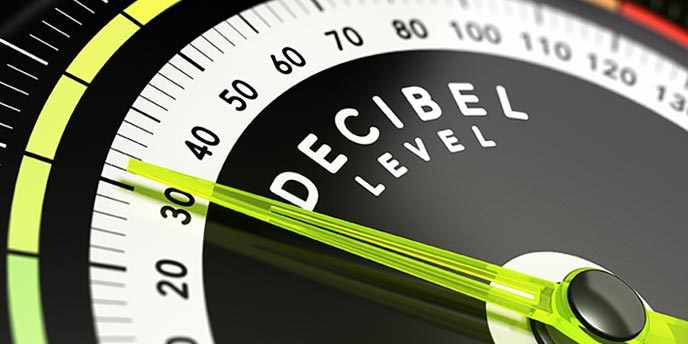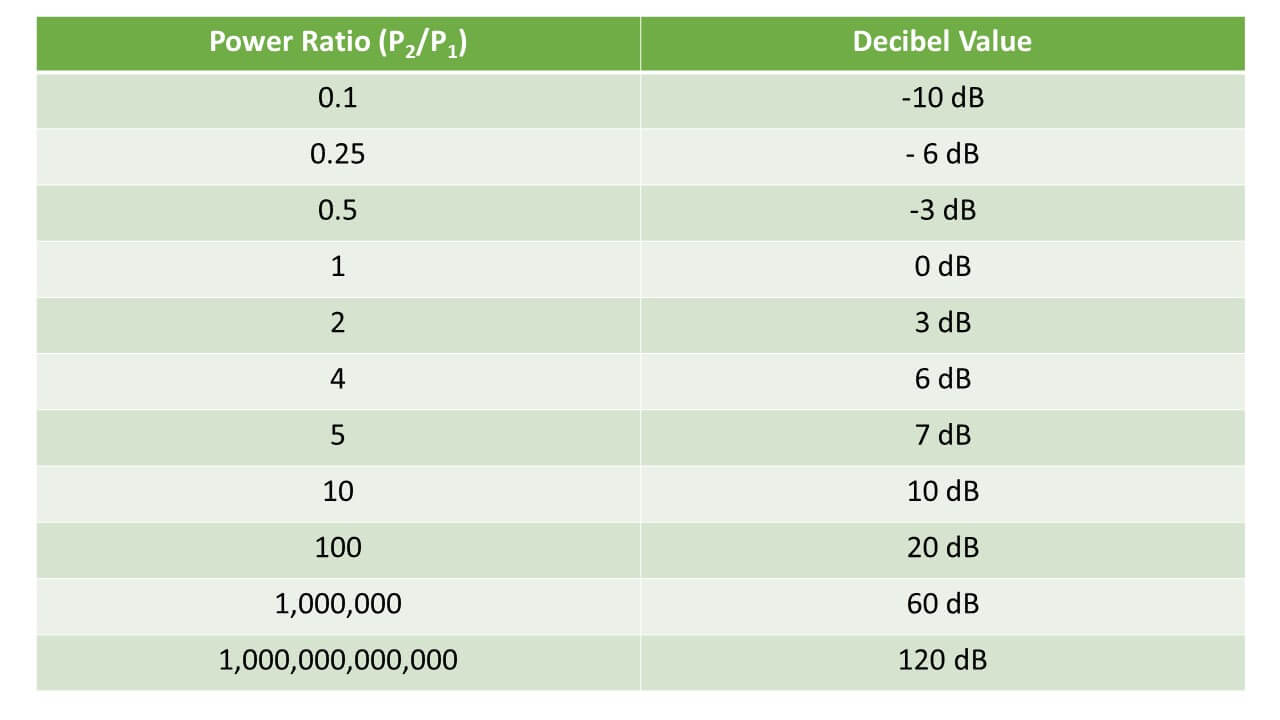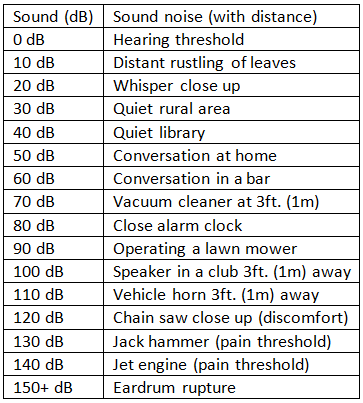
There are some things in the world of electronics that are just confusing to people, though they are actually simple underneath. The decibel is one of them.
If you’re into electronics you probably have heard the term decibel or dB thrown around.
Even if you’re not an electronics enthusiast at all, you may have heard the term used in situations dealing with sound.
Understanding the decibel (or dB) is important for any aspiring electronics geek.
Decibels show up in amplifier design, filter design, Bode plots, antenna specs and more.
Fortunately, the concept of the decibel is relatively simple once you understand it. In fact, this post will probably be shorter than most of the others due to the simplistic nature of this unit.
Now, let’s talk about decibels.
The Decibel
Quick History of the Decibel
Historically, the bel was used to measure the ratio of two levels of power or power gain.
This unit is named after the famous inventor of the telephone — Alexander Graham Bell.
The problem is that the bel is a big, clunky unit that is mostly impractical to work with because it represents a rather large change in levels. Most of the time you need something smaller with better resolution. Because of this, few people use the bel these days.
Enter the decibel.
As you may know, the prefix deci means one-tenth. Therefore, a decibel is one-tenth of a bel and is also a way easier unit to work with.
So, What is a Decibel?
In electronics, you’ll often encounter situations where you’ll need to compare the power or amplitude of two signals.
The basis for the decibel stems from the logarithmic response of the human ear to the intensity of sound. There is genius in nature and as we’ll soon see this type of response allows us to perceive a huge range of sound levels.
Perhaps you’re familiar with logarithms. Or maybe not.
This isn’t a math blog, but just so we’re all on the same page I’ll give a quick example of what a logarithm is for those who are new to them.
Consider equation 1.
log10(100) = ? (eq. 1)
If I wanted to state equation 1 in words, I would say something like 10 raised to what power equals 100?
Logarithms can be in different bases, but for the purpose of the decibel they are in base 10. When writing logarithms in base 10, we usually infer the 10 rather than writing it out, so equation 1 normally appears as equation 2.
log(100) = ? (eq. 2) [the fact that there’s no subscript after log means it’s in base 10]
When writing logarithms is other bases, like base 2, the subscript is included so we know what base it’s in.
In case you didn’t know, the answer to the equation above is 2, because 102 equals 100.
Logarithms can sound intimidating if you’re new to them, but the concept is simple. If you’re unfamiliar with them the Internet or an algebra book can help. Understanding the basics of logarithms will be helpful in understanding the decibel.
So, let’s answer the question what is a decibel?
Ever dreamed of being Iron Man, having the ability to build anything, anytime? Try Academy for Arduino!

The decibel is simply a ratio of two power levels, as we can see in equation 3.
dB = 10 log (P2/P1) (eq. 3)
Often in electronics, one may deal with ratios that can approach several million or more. For example, the ratio of an input power of 1 mW to an output power of 1,000 W is 1,000,000.
Graphing something like this would be unwieldy, so that’s where the logarithm comes in. The logarithm “squishes” it down so it will fit. For example, consider a graph of a ratio of powers that’s 10’ long. By using logarithms, we can fit the same graph on a much smaller sheet of paper.
Anyway, the dB has no unit as it is simply a ratio. It’s just a number that describes how much bigger or smaller a quantity is than some other quantity.
In equation 3, if P2 is larger than P1 the decibel value is positive, such as in the gain of an amplifier. If P2 is less than P1 the dB value is negative and represents loss or attenuation, such as the roll-off of a filter.
Decibels Can Also Compare Voltages & Currents
The decibel unit can also be used to compare voltage or current levels.
However, remember that the relationships between power and voltage and power and current are not linear. A doubling of voltage or current results in a quadrupling of power.
Fortunately, the logarithmic nature of the dB makes this easy to deal with. Equations 4 and 5 show the dB relationship for voltage and current.
dB = 20 log(V2/V1) (eq. 4)
dB = 20 log(I2/I1) (eq. 5)
Notice the only difference (besides using voltage or current instead of power) is that we’re now multiplying the logarithm by 20 instead of 10. This is due to one of the logarithm laws, which makes the exponent in the I2 or V2 terms “pop out” of the logarithm. For more on logarithm laws check this out.
Alternate Representations of the Decibel
In certain situations, it is often convenient to compare a power level with some other reference.
Whenever you see another letter following dB, you know that some reference power is being used.
What do I mean?
For example, a unit that is often used in measuring power is the dBm. The terms dBm means decibels referenced to 1 mW of power.
So, if you use 1 mW as the reference level you will calculate your decibel values with respect to one milliwatt. In this case, a power level of 10 dBm is 10 times 1 mW or 10 mW while 3 dBm is 2 mW and so on.
Other common representations of the decibel are the dBW (reference level of 1 watt), the dBV (reference level of one volt), and the dBµV (reference level of 1 µV).
Recognizing Decibel Power Ratios
You may be wondering how I knew that 3 dBm was equal to 2 mW or how we can come up with the dB value “on the fly” without a calculator.
There are several common power ratios you should learn to recognize and associate with the corresponding number of decibels. It’s easier than you may think.
Doubling power is one common scenario. In decibels, doubling power is the same as increasing it by 3 dB. It doesn’t matter what power you start with, doubling power always results in a gain of 3 dB.
Another common scenario is halving the power. Those familiar with filters may have heard about something called the half-power point (also called the cut off frequency and other things). This is the -3 dB point on the frequency response graph of the filter. A loss of 3 dB cuts the power in half. The negative sign in front of the 3 simply indicates loss rather than gain.
Need to increase the power by 4? No sweat. Just double the decibel (from 3 dB) to get a gain of 6 dB. If you’re instead cutting it into fourths it would be -6 dB. Similarly, increasing power by 8 (which is 4 times 2) will give you 12 dB, which is 6 dB doubled. These all rely on doubling. Easy enough.
Another trick involves exponents of 10. For example, a change of 100 (which is 102) is the same as a change of 20 dB (2 x 10 dB) because of the logarithm laws. Likewise, a change of 1,000 (103) corresponds to 30 dB (3 x 10).
Even with these handy tricks there are times when you’ll either need a calculator or a chart. Toward that end, the chart below summarizes the relationship between many decibel values and the power change.

Figure 1: common power ratios and their decibel equivalents. The chart is for POWER, the dB values for voltage or current ratios are different.
As an extra bonus, the nifty chart below shows decibel values as they relate to sound.

Figure 2: decibels pertaining to sound. Note that 0 dB (the hearing threshold) is the reference.
Does That Ring a Decibel?
I told you this post would be shorter than usual.
If you’re still a bit shaky on logarithms, I suggest doing more research on the topic as it will be a good aid in understanding why decibel values are what they are and why people even use this unit in the first place.
Hopefully the term decibel is no longer foreign to you after reading this. Next time someone talks about the decibel, it’ll ring a bell!
Leave a comment and tell us about your dream project. What does it do? How does it work? We’d love to know. Or you can just talk about decibels.
Ever dreamed of being Iron Man, having the ability to build anything, anytime? Try Academy for Arduino!

Electronics Tips & Tutorials Sent Directly to Your Inbox

Submit your email & you'll get:
- Exclusive content that I don't put on the blog
- The checklist 10 mistakes all electronics enthusiasts make (& how to avoid them)
- And more!
Great job and love the chart. The decibel was always one of those things that I found hard to wrap my head around. Keep the posts coming!
Will do, glad you enjoyed it!